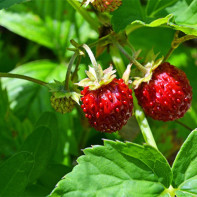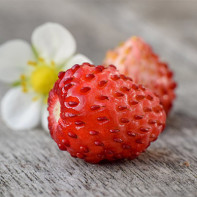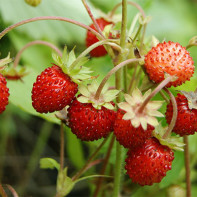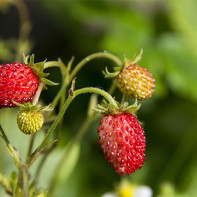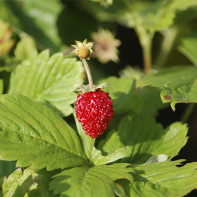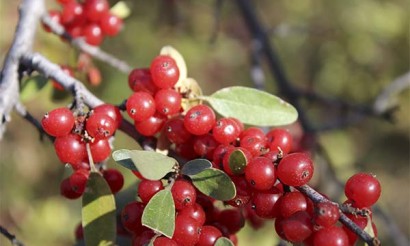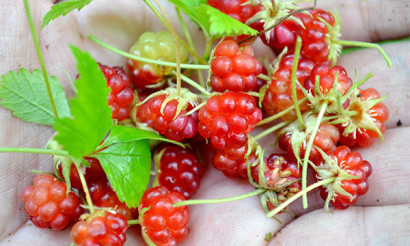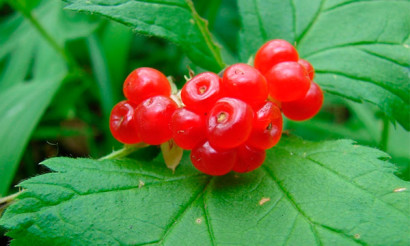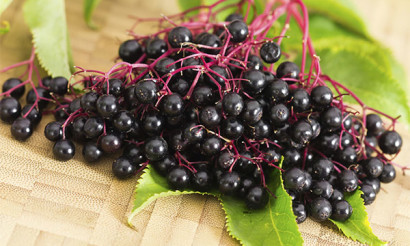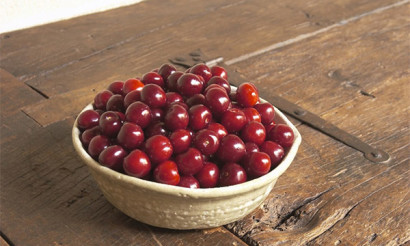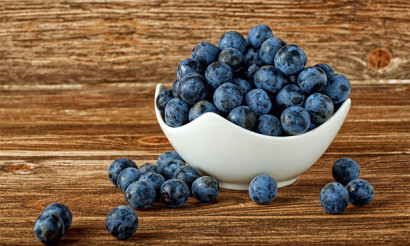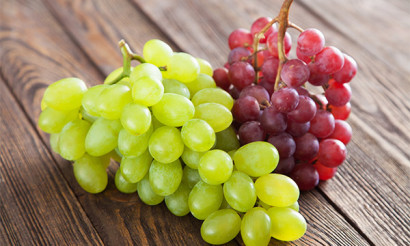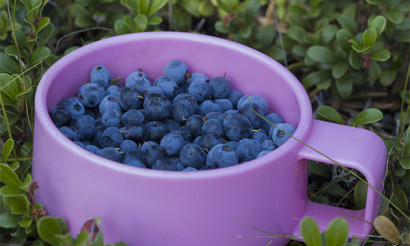Strawberries: useful properties and contraindications
Strawberries are perennial herbaceous plants belonging to the Rosaceae. Strawberry stems reach a height of 20 cm, they are straight, with a hairy coating, have trifoliate leaves of dark green and glaucous-green color. Strawberries bloom in May-July, and harvest from early summer to early fall, which depends on the particular variety of berry.
- What is the difference between strawberries and strawberries
- What's healthier: strawberries or strawberries
- Composition and calories
- Useful properties of strawberries
- General benefits
- For Women
- For Men
- In Pregnancy
- Breastfeeding
- For children
- When losing weight
- The benefits and harms of strawberry leaves
- What is useful for tea from the leaves
- Useful Dried Strawberries
- How to Dry
- Strawberries in medicine
- Diabetes mellitus
- In pancreatitis
- For gastritis
- For gout
- For Liver
- Strawberry in cosmetology
- For Face
- For hair
- Harms and Contraindications
- When to pick and how to store strawberries
- Can I freeze strawberries?
- How to Eat Strawberries
- How much can I eat per day?
- Can they be eaten at night?
- What can be made of strawberries: Recipes
- Jam
- Compote
- Wine
- Can we give animals strawberries?
- Interesting facts about strawberries
Wild strawberry grows in Russia, Central Asia and other countries with a similar climate. This plant prefers bright, sunny places, various hills, glades and edges. It is not uncommon to find real strawberry thickets, called glades.
What is the difference between strawberries and strawberries
Strawberries and strawberries are equally appreciated by the people of Russia. Both berries have an amazing taste and also contain a lot of vitamins and other elements. In their appearance, strawberries and strawberries are also very similar, but still it is not difficult to distinguish them, if you take into account several criteria:
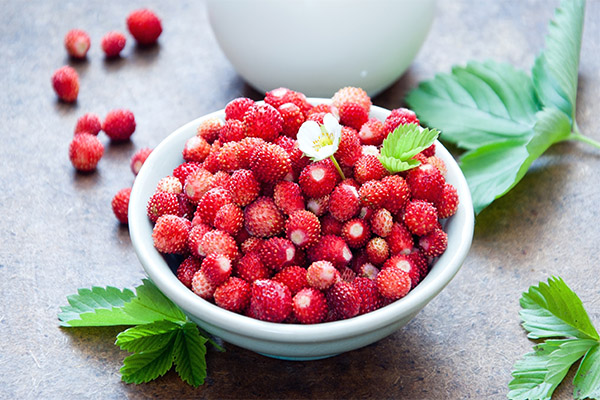
- Strawberries are usually larger than strawberries, but if we are talking about garden strawberries, not forest strawberries, they can be quite large and it will not be so easy to distinguish them from strawberries.
- Strawberries have a richer and brighter color. Strawberries, on the other hand, are more often just red and dark red. But this criterion applies only to fully ripe berries.
- Strawberry bushes grow up to 20 cm, and strawberries - up to 32 cm. Both plants have whiskers, due to which there is a multiplication of crops.
- The leaves of the plants in question also differ from each other. Strawberries, for example, have larger, thicker, corrugated leaves, while strawberries have thinner leaves with serrated edges.
- Strawberries have a sweeter flavor, while strawberries are more likely to be sour.
Thanks to the signs listed above, even someone who is not very knowledgeable about berry crops can easily determine which is a strawberry and which is a strawberry.
What's healthier: strawberries or strawberries
Strawberries and strawberries are some of the most useful berries. They contain many vitamins and other essential substances, they are familiar to mankind since antiquity and are used to treat many ailments. In order to understand which of these berries is more useful, it is necessary to analyze the effect of each of them.
Strawberries are advised to use in the presence of nervous system disorders, jaundice, as well as angina and hemorrhoids, strawberries - for the treatment of the digestive organs, kidneys, bladder. Both berries are eaten to improve immunity and body resistance to colds and viral diseases, as well as to make up for vitamin and mineral deficiencies.
From the point of view of folk healers, strawberries are more useful berries than strawberries. But this applies only to the forest berry. The considered berry crops grown in the garden have almost the same useful and tasty qualities.
Composition and calories
Strawberries have a very valuable composition, including B vitamins, ascorbic, citric and malic acid, pigments, carotene, natural sugars, as well as such important elements for humans as iron, copper, phosphorus, calcium, potassium, manganese and cobalt. All these substances are necessary for the body to maintain its life and performance at a high level.
For all their valuable composition, strawberries have low calories - only 34 kcal per 100 grams, due to which the considered berries can be successfully used in the menu of thinners and those who simply watch their weight.
Useful properties of strawberries
General Benefits
Strawberries - a delicious and valuable berry for health. Due to its rich composition, it can only have a beneficial effect on the human body. With the help of strawberries you can overcome some serious diseases, up to cancer, as well as improve the general well-being, eliminate insomnia, relieve headaches and much more.
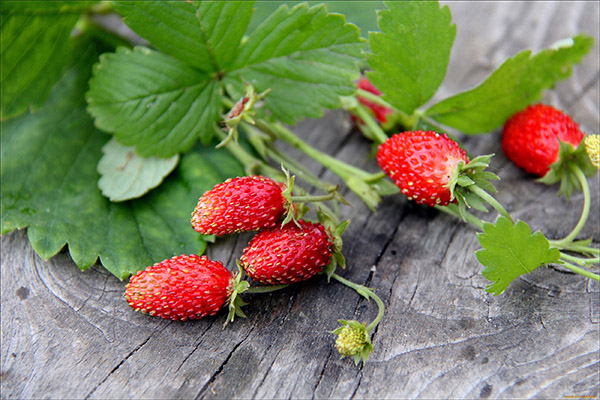
Let's consider the effect of strawberries on the female and male body and find out whether it is allowed to use this berry during pregnancy and breastfeeding, as well as in young children and people with excess weight.
For women
Strawberries have several beneficial properties for the female body. So, it gives a styptic effect (which is important for heavy bleeding during menstruation), supports optimal hemoglobin levels, replenishes the supply of B vitamins, as well as biotin, magnesium, copper and zinc. Together all these substances can have a positive impact on a woman's appearance. The regular consumption of strawberries makes the skin healthier, the hair and nails stronger and the mood better.
Also the positive effect of the use of strawberries in the process of losing weight, a problem that mainly concerns women. To get the maximum beneficial properties of strawberries, you can not only consume berries internally, but also use them as an ingredient in the manufacture of masks, peelings and other cosmetics.
For men
Strawberries are capable of having a positive effect on the male body. The vitamins and other useful substances present in this berry strengthen the immune system, increase the body's resistance to viruses and colds, as well as regulate the emotional background, improve potency and increase libido. Thus, strawberries for men are extremely useful, its regular use will give all the above positive results.
Particularly worth paying attention to strawberries for athletes and men whose work involves physical labor. Due to the predominantly carbohydrate composition, strawberries can maintain energy at optimal levels, as well as replenish missing vitamins, macro- and micronutrients.
Pregnancy
Since a pregnant woman needs more nutrients, she needs to eat vegetables, fruits and berries more often. Strawberries, due to their valuable composition, are the best suited for this purpose. However, this product is quite allergenic, so the mother-to-be should include it in her menu in small quantities, as well as monitor the reaction of the body.
Vitamin B9 and folic acid contained in strawberries have a positive influence on the formation of the neural tube of the fetus. The high amount of iron in these berries allows preventing the occurrence of iron deficiency anemia, a common problem for many expectant mothers. A lot of strawberries and vitamin C, which increases the body's resistance to colds and viral diseases.
Strawberries also contain elements such as magnesium (useful for the CNS), potassium (prevents diseases of the cardiovascular system), riboflavin (prevents the development of malignant tumors). Sufficient fiber regulates digestive processes, gently eliminating constipation.
Pregnant women can use not only strawberries themselves, but also make on the basis of the leaves and stems useful decoctions and teas. They help relieve nervous tension, stabilize mood and eliminate insomnia.
When breastfeeding
Since all the useful substances the baby gets through the mother's milk, it is important to make sure that it contains all the necessary vitamins and minerals. To do this, a young mother should have a varied diet that includes only useful products. Strawberries are an irreplaceable source of many useful substances, which are essential for the favorable growth and development of the baby.
Strawberries contain vitamins C, folic acid, carotenoids, potassium, magnesium, iron and other substances that are important both for the mother and her baby. Thus, strawberries are a source of valuable substances for the body. They can and should be included in the diet during breastfeeding, observing the precautions.
Introduce berries to the diet of a nursing mother gradually, starting with 1-2 berries a day. If the baby does not manifest allergic and other reactions (rash, insomnia, appetite, stomach pain), you can increase the portion gradually leading up to 50-100 grams per day. It is important to make sure that the strawberries are grown in environmentally clean conditions, are not fertilized with chemical fertilizers and properly stored after harvesting.
For kids
Strawberries - a real treasure trove of beneficial substances necessary for the growth and development of children. Folic acid, zinc, magnesium, potassium, iron, copper, manganese - all this is necessary for the growing body. However, the introduction to children's diet of strawberries should be careful, since this berry refers to allergenic products. No matter how we would like to please the baby delicious berries, it is better to wait until he turns one year, and some pediatricians advise to acquaint the child with strawberries before the age of two.
When losing weight
Strawberries - a fairly low-calorie berry (about 37 kcal per 100 grams), so it can safely be consumed by people who lose weight. To achieve quick weight loss results it is recommended to eat 100-150 g of berries a day. The strawberries are best eaten in the first half of the day, but not on an empty stomach; they can be added to cottage cheese, cereals, to prepare from it desserts and drinks. Strawberries not only diversify the diet, but also replenish the reserves of useful substances, which are usually lacking in thin people because of dietary restrictions.
The benefits and harms of strawberry leaves
Strawberry leaves are widely used in phytotherapy. It is believed that the leaves of this plant contain more useful substances than the berries themselves. So, just 2 cups of strawberry tea a day contain daily amount of vitamins B, A, C, macronutrients: potassium, magnesium, calcium, trace elements: iron, manganese, copper, iodine, zinc and chromium. Strawberry leaves strengthen the immune system, improve digestion, remove excess fluid from the body, have wound-healing properties and help in the fight against many diseases.
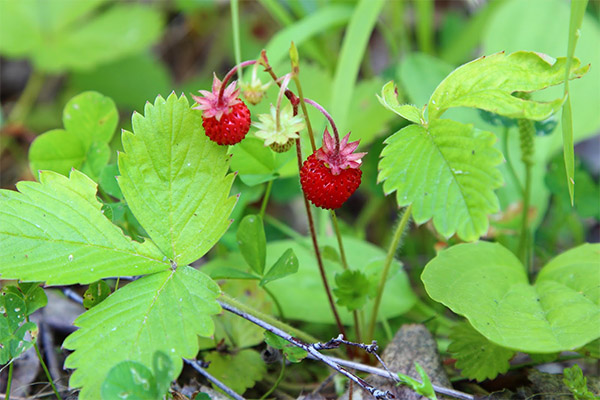
Strawberry leaves will do no harm if you consume teas and decoctions from it in small quantities. It is enough to have only 1-2 cups of tea a day to get all the useful properties of this plant.
What is the usefulness of leaf tea
Tea from strawberry leaves is made simply - it's necessary to take 1 tbsp. of dried leaves or 5-7 fresh leaves, pour boiling water (300 ml) and allow to infuse for 20 minutes. Such tea has a soothing effect, has a beneficial effect on the quality of sleep and mood during the day. Also, this tea can relieve joint pain, strengthen the walls of blood vessels, increase hemoglobin, relieve nausea, improve the condition of women during menstruation. Tea from strawberries is useful for improving the immune system and the overall tone of the body.
Useful in dried strawberries
Strawberries can be harvested for the winter, not only in the form of jams and compotes, but also as dried fruit. Dried berries have almost the same set of beneficial properties as the fresh ones. They keep the main quantity of vitamins and minerals. Dried berries can be a great substitute for sweets for tea, and make up for the lack of nutrients during the cold season.
How to Dry
To procure strawberries in the form of dried fruit, it is necessary to collect the berries correctly. Harvesting is recommended in the morning hours, but after the dew has already dried. Harvested berries are freed from the stalks, removed from leaves, damaged specimens and other debris, then washed under running water and poured on paper to dry. After this, the berries are poured in a single layer on a clean surface and left in the fresh air until completely dry, avoiding direct sunlight.
You can also dry strawberries in the oven at a temperature of 45-50 degrees. The berries will be ready when they are no longer sticky to the hands, and when you press them will not release the juice.
Strawberries in medicine
Strawberries are used not only in folk medicine, but also in traditional medicine. And the extract of this plant is obtained both from berries and from the leaves and even the roots.
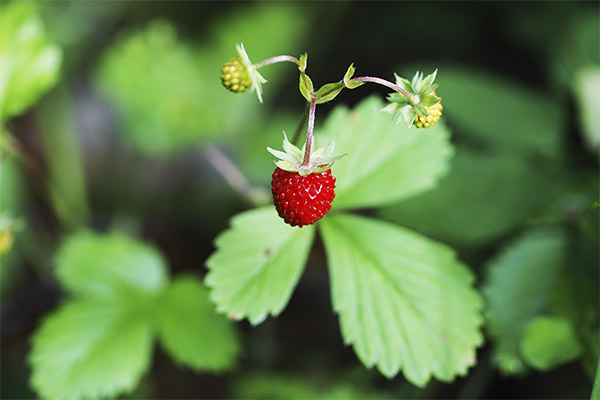
It is good for diabetes
Patients with diabetes are allowed to use these berries in the absence of individual intolerance and other contraindications. Strawberries contain fructose and glucose, which are important for diabetics. The use of 50-100 grams per day is allowed, such an amount is enough for a patient to get enough useful substances from this berry.
Important: The glycemic index of strawberries is 25 units.
For pancreatitis
To treat pancreatitis, you can use an infusion of leaves, rhizomes and berries of strawberries. This plant has an anti-inflammatory and stimulating effect, which has a beneficial effect on the condition of patients with pancreatitis. However, before starting an independent treatment of pancreatic disease, it is mandatory to consult with a doctor.
Gastritis
Patients with gastritis can consume strawberries, but in this case you should observe some rules of caution. Thus, it is forbidden to eat berries on an empty stomach and separately from other products, it is better to add them to dishes, prepare desserts and compotes with strawberries. The acute form of the disease, as well as gastritis with hyperacidity is a taboo for the consumption of almost all fresh berries. If gastritis is in remission, it is allowed to eat strawberries in an amount not exceeding 50-100 grams per day.
With gout
Since strawberries are known for their anti-inflammatory and analgesic effect, it is recommended to eat them for people with such a disease as gout. Not only the berries themselves, but also decoctions from the leaves, roots and stems help to cope with the symptoms of gout and even defeat this disease, provided you regularly use berries and infusions from strawberries.
For the liver
In the treatment of diseases of the liver and gallbladder, strawberries can be used. To prepare a folk remedy for liver disease, you need to take 2 tbsp. The composition should be taken three times a day with a tablespoon. Take the composition three times a day with a tablespoon.
Strawberry in cosmetology
The fruits, leaves and roots of strawberries are used in cosmetology for making various skin and hair care products. Today we are talking about the most effective ways to use strawberries in cosmetology.
For Face
- With the help of strawberry juice, you can remove pigment spots and freckles. It is not necessary to make juice directly from berries, it is enough to take a few strawberries and wipe your face with them, and 15-20 minutes later wash with warm water.
- Tone and refresh the skin of the face with frozen strawberry juice. To do this, you can pour freshly squeezed strawberry juice into an ice mold and freeze, then take out one cube at a time and wipe your face with them.
- Nourishing" face mask: take a absorbent cotton or gauze folded in several layers, moisten with strawberry juice and put on your face. After 20-30 minutes remove the mask and wash your face with cool water.
- Thin and sensitive skin requires special care. The following mask is suitable for such type of skin: mix 2 tsp. strawberry juice, 1 tsp. honey and fat cottage cheese, put it on your face, hold it for 15-20 minutes and wash it off.
- Mask for dry skin: Mash strawberries (1 tbsp.), add 1 tbsp. fat sour cream and a few drops of coconut oil. Apply the mixture to the skin, hold for 30 minutes and rinse with warm water.
For Hair
- A nourishing hair mask based on strawberries is prepared as follows: Turn 3 tbsp. berries into a puree, add 1 tbsp. blue clay, one egg yolk, all thoroughly mixed, apply to the curls on the entire length, wrap with plastic wrap and warm with a towel. After half an hour, rinse thoroughly with water and shampoo.
- Well-being hair mask: mix 3 tbsp. beer with 2 tbsp. mashed strawberries and one egg yolk, put on hair, hold for 20-30 minutes, then wash it as usual.
- Mask for damaged hair: mix in equal proportions of mashed berries and heavy cream, apply to the entire length of the locks, half an hour later wash your hair.
- From split ends is suitable mask based on strawberries, gelatin (diluted according to the instructions on the package) and your favorite hair balm. Mix all the ingredients, apply to the hair, paying particular attention to the tips, half an hour later rinse.
- Mask for hair growth: mix 2 tbsp. each of strawberry puree and burdock oil, heat in a water bath until warm and apply to the locks, rubbing thoroughly into the roots. Such a mask to keep for 30-40 minutes, and then rinse with water.
Harms and contraindications
Strawberries - a fairly allergenic berry, so you can use it only if there is no individual intolerance of its components. Also it is necessary to observe a measure in eating this berry, in order to avoid digestive disorders. An adult is enough for 1 cup of berries a day, for children - no more than 0.5 cup.
Contraindications to the use of strawberries are associated with the presence of diseases of the gastrointestinal tract, which are in the acute stage. Also with caution should eat strawberries in diabetes, and during the reception of certain medicines before drinking it is better to consult a doctor.
When to pick and how to store strawberries
Strawberries usually ripen as early as the first month of summer, but in some cases this period may vary. Thus, the speed of berry ripening is influenced by climatic conditions, place of growth, type of crop and other factors (weather, soil moisture, etc.). The average time frame for strawberry ripening is in the period from July to August. However, there is a remontant variety of berries, which are harvested up to the first frost.
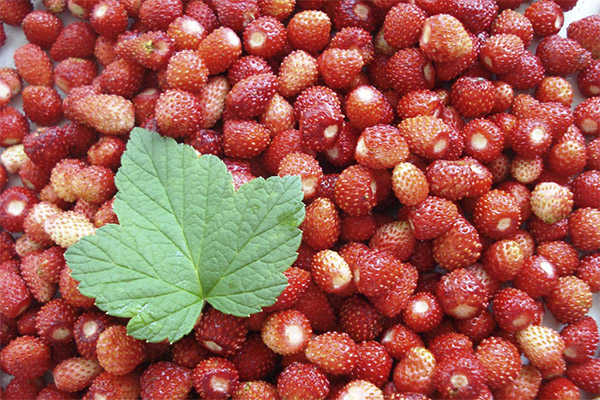
Can they be frozen?
Like many other berries, strawberries are suitable for freezing. They can be frozen whole or grinded with sugar and mixed with other types of berries - strawberries, blueberries, currants etc. Frozen strawberries can be stored for 12-18 months, during this period it is able to save almost all the useful substances.
How to eat strawberries
The best way to eat strawberries is freshly picked in the forest or from the bed. Of course, before eating berries, they should be thoroughly washed under running water. You can also use strawberries in desserts, drinks and other dishes. However, it is desirable not to subject this berry to heat treatment, because in this case it loses some of its useful properties.
How much you can eat per day
Since strawberries are quite allergenic berries, it is recommended to eat them in limited quantities. Adults can eat 100-150 g of berries a day, while for children 50 g is sufficient. The excessive use of berries can provoke allergies and digestive disorders.
Can I eat them at night?
Strawberries are not recommended to be eaten at bedtime by those, who want to lose weight, because this berry contains a fairly high amount of carbohydrates, preventing to lose weight. Also it is not recommended to eat strawberries for those who suffer from gastrointestinal diseases. In other cases, you can consume this berry at any time of the day, if it does not bring discomfort.
What can be cooked from strawberries: Recipes
Strawberries can be eaten not only as a separate delicacy, but also to prepare with it a variety of dishes, as well as to make preparations for the winter. Let's consider the most popular ways of making strawberries.
Jamming .
The most common way of making strawberries - jam. From generation to generation passed on a classic recipe for making strawberry jam: 1 kg of berries need to take 1.2 kg of sugar and a pinch of citric acid. Wash the strawberries. Remove excess water, pour half the sugar and leave for 5 hours until the berries will not give juice. Then put on the stove and bring to the boil. Add the rest of the sugar and simmer for another 15 minutes, stirring occasionally and skimming off the foam. At the very end of cooking, add citric acid to avoid sugaring the jam when storing it for a long time. Ready to cook jam pour into dry, clean and sterilized jars and seal.
Compote
To make compote from strawberries for the winter you need to take 1 kg of berries, 1 liter of water and 250 grams of sugar. First, you need to prepare the jars by thoroughly washing and sterilizing them. Then sort and wash the berries, lightly dry them and put them in jars. Pour boiling water over jars and cover them. After 10-15 minutes, pour the water into a pan. Add sugar and boil the syrup. Pour the boiling syrup over the berries in jars, wrap them up, turn them on their lids and wrap them in plaid. Leave in this condition overnight, then store in a dark cool place. Prepared by this recipe compote can be stored for a year.
Wine
Strawberries make a delicious and fragrant red-pink wine. It will be a great addition to the dinner, as well as make up for the lack of some substances in the body. You can make wine from strawberries according to the recipe below.
Picked strawberries (4 kg) should be sorted, washed in warm water (this will get rid of their bitterness), prepare containers (washed, dried), prepare sugar syrup: 2 liters of water and 1 kg of sugar boil for 3-5 minutes over low heat. After that, cool the syrup a little, add berries, 1 liter of cold water, 100 g of unwashed raisins (so the wine will work). Cover the container with gauze and place in a dark place for 5 days, stirring twice a day.
When the must ferment, drain the liquid through a tube, squeeze the pulp, add 500 grams of sugar and pour into jars, filling them 75%. Put on medical gloves with a small hole in each of the containers, leave for fermentation at a temperature of 18-20 degrees for 5 days. Then add 500g more sugar, cover and leave for 55 days (you may need 30-60 days). Pour the finished wine through a tube into a container and leave it to age for another 1-2 months. After this, the wine will be finally ready to drink. If a sediment is formed, the wine must be poured through the tube again.
Can pets be given strawberries?
Some pets can eat fruits, vegetables and berries. Strawberries are generally loved by some dogs, cats and rabbits. It is allowed to give animals strawberries, but in small quantities, since their digestive system is almost incapable of digesting such products. Only 3-5 berries a day for a large dog or 1-2 berries a day for a cat or guinea pig is enough to replenish the lack of nutrients in the body of the pet.
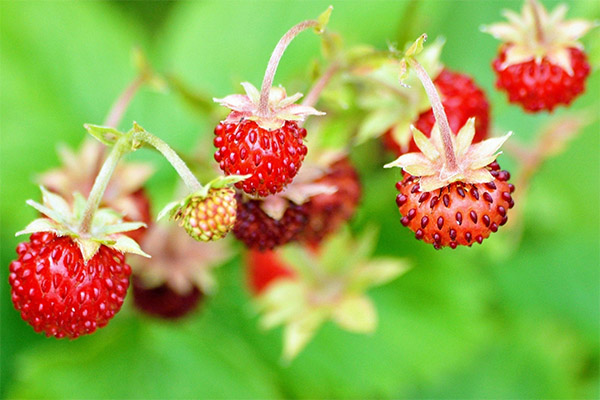
It should be noted that some pets - rabbits, hamsters and guinea pigs, can be given not only berries themselves, but also strawberry leaves. Just a few leaves a day is enough to replenish useful substances.
Interesting facts about strawberries
- Cultivation of strawberries began only in the late 15th century, although this plant was known to man in ancient times. Before that time, people collected and used as food only wild strawberries.
- Today there are about 600 different varieties of strawberries.
- Strawberry is able to relieve headaches because it contains substances similar to analgin.
- Scientifically, strawberries and apple trees are related plants.
- Strawberries are just one of the strawberry varieties, although it has long been accepted that they are different berries.
- Wild strawberries can grow in the vegetable garden, but their berries and leaves will change slightly over time, namely, they will become larger.
- Strawberries are most loved in Belgium. This country grows the largest volumes of this berry.
- Strawberries cannot grow and bear fruit in the same place for more than five years. Wild varieties migrate on their own with whiskers, domestic ones should be transplanted from time to time.
«Important: All information on this site is provided for introductory for information only. Consult a professional before applying any recommendations. specialist before applying any recommendations. Neither the editors nor the authors shall be liable for any possible harm caused by materials."

